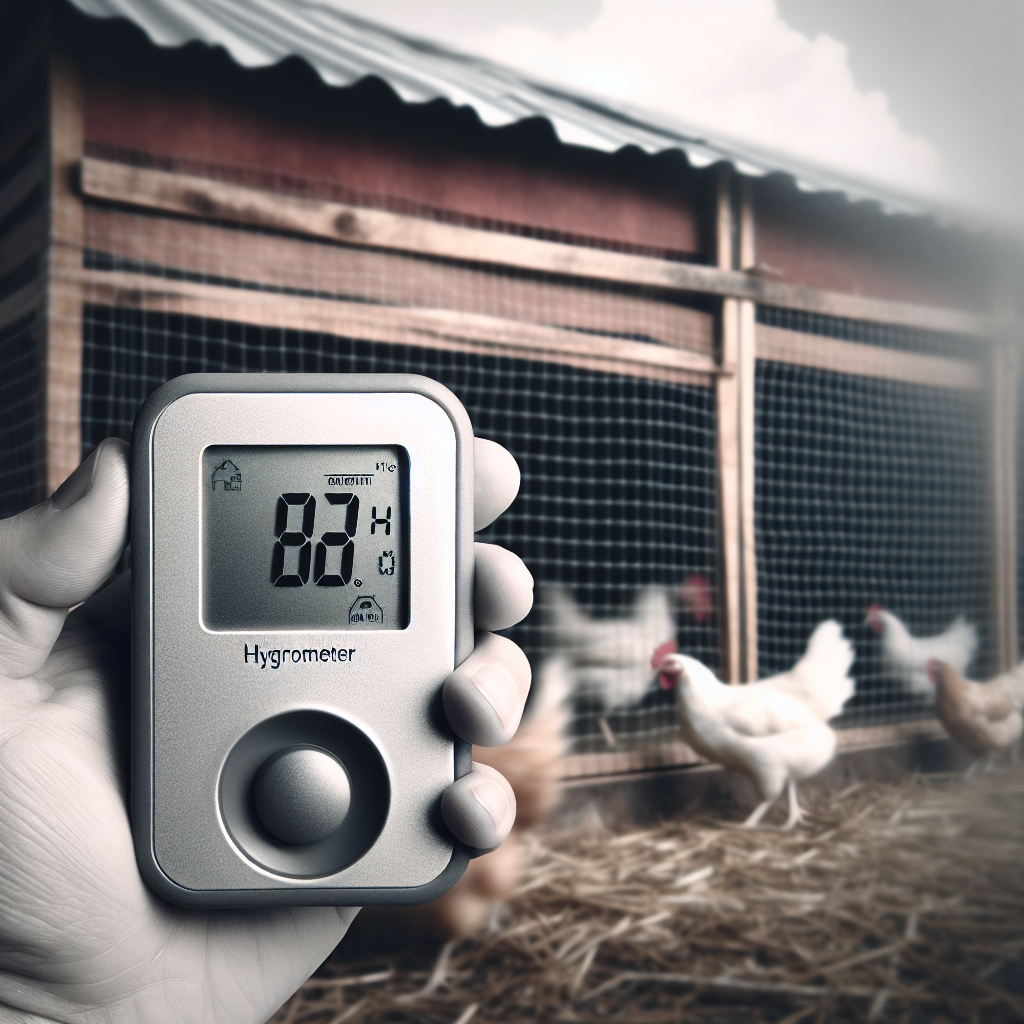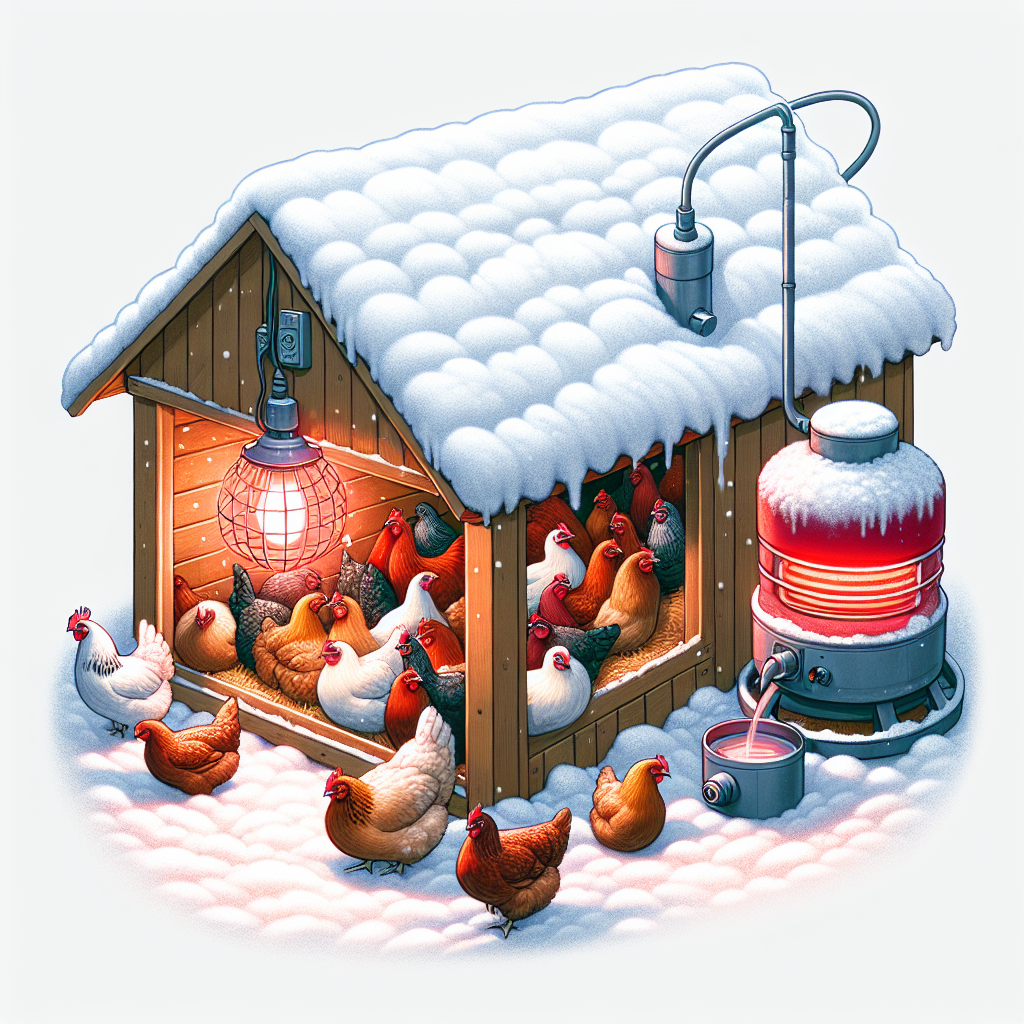During the winter months, it’s essential to keep a close eye on the humidity levels in your chicken coop. High humidity can lead to a variety of health issues for your feathered friends, including respiratory problems and the growth of mold and bacteria. On the other hand, low humidity can cause discomfort and dry out the chickens’ delicate respiratory membranes. So, how do you strike the right balance? In this article, we’ll explore some practical and friendly tips to help you effectively manage humidity levels in your chicken coop during the winter season.
Understanding the Impact of Humidity in the Chicken Coop
Why is humidity important?
Humidity refers to the amount of moisture or water vapor present in the air. It plays a crucial role in maintaining a healthy environment for your chickens in the coop. Proper humidity levels are essential for their well-being and productivity. Both low and high humidity can have negative effects on your flock, so it’s important to understand how to manage and control it effectively.
Effects of low humidity in the chicken coop
Low humidity levels in the chicken coop can lead to various issues. One of the main concerns is dehydration, as dry air can cause chickens to lose moisture from their bodies more rapidly. This can result in dry, flaky skin, respiratory problems, and reduced egg production. Additionally, low humidity can lead to the buildup of dust and increase the risk of respiratory infections in chickens.
Effects of high humidity in the chicken coop
On the other hand, high humidity can also cause problems for your chickens. Excessive moisture in the air can create a breeding ground for bacteria and fungi, increasing the risk of respiratory and skin infections. It can also promote the growth of mites and parasites. Moreover, high humidity can negatively impact egg production, as it can interfere with the hens’ ability to lay eggs properly.
Measuring and Monitoring Humidity Levels
Tools for measuring humidity
To effectively manage humidity in the chicken coop, it’s important to have the right tools for measuring humidity levels. A digital hygrometer is a recommended instrument that can accurately measure the humidity present in the coop air. These devices are affordable, easily accessible, and provide real-time data on humidity levels.
Recommended humidity levels for chickens
The optimal humidity range for chickens in the coop is typically around 50 to 70 percent. This range provides an ideal balance, ensuring the right amount of moisture without creating conditions that are too dry or too humid. It’s important to regularly monitor the humidity levels and make adjustments as needed to maintain a comfortable environment.
Monitoring the humidity levels
Frequent monitoring of the humidity levels in the chicken coop is essential for maintaining a healthy environment. Use a hygrometer to regularly check the humidity and make note of any fluctuations. Keep a record of the humidity levels to spot any patterns or issues that may arise. This information will help you make informed decisions about humidity control strategies.
Ensuring Proper Ventilation
Importance of ventilation for humidity control
Proper ventilation is paramount when it comes to managing humidity levels in the chicken coop. Ventilation helps remove excess moisture, stale air, odors, and harmful gases such as ammonia, while promoting the circulation of fresh air. It plays a crucial role in preventing the buildup of high humidity and maintaining a healthy environment for your chickens.
Types of ventilation systems
There are different types of ventilation systems you can implement in your chicken coop. Natural ventilation relies on windows, vents, and openings to allow air exchange. Mechanical ventilation, such as exhaust fans or air circulation fans, can be installed to enhance airflow in the coop. A combination of both natural and mechanical ventilation can be used for optimal humidity control.
Positioning and maintenance of vents
Proper positioning of vents is essential for effective ventilation. It’s important to place vents at different levels to ensure proper air circulation. The size and quantity of vents should be based on the size of the coop and the number of chickens. Regular maintenance of the vents is also crucial to prevent blockages and ensure a consistent airflow throughout the coop.
Insulation and Draft Prevention
Insulating the chicken coop
Insulation is key in maintaining a suitable humidity level in the chicken coop, especially during winter. Proper insulation helps regulate temperature, preventing excessive heat loss in colder months and reducing the risk of condensation. Insulating the walls, roof, and even the floor can help create a more comfortable and stable environment for your chickens.
Sealing gaps and cracks
To prevent drafts and maintain consistent humidity levels, it’s important to seal any gaps and cracks in the chicken coop. These openings can allow cold air, moisture, and drafts to enter, which can disrupt the temperature and humidity balance. Use weatherstripping, caulking, or insulation foam to seal openings and ensure a tight seal.
Preventing drafts without compromising ventilation
While sealing gaps and cracks is important, it’s crucial to maintain proper ventilation even when preventing drafts. Ensure that the ventilation openings are not blocked by insulation or sealed too tightly. This will allow fresh air to enter while preventing the direct flow of cold air onto your chickens. A balance between insulation and ventilation is key to maintaining humidity levels.
Managing Bedding Material
Choosing suitable bedding material
Choosing the right bedding material is crucial for moisture control within the coop. Materials such as straw, wood shavings, or sand are commonly used and provide good moisture absorption. Avoid using materials that can retain too much moisture, such as newspaper or hay, as they can create a damp environment that promotes the growth of bacteria and fungi.
Maintaining cleanliness and dryness
Regularly cleaning the coop and removing soiled bedding is essential for maintaining low humidity levels. Moist bedding can lead to high humidity and create an unhealthy environment for your chickens. Replace wet or soiled bedding promptly to prevent the buildup of moisture and the subsequent negative effects on your flock’s health.
Replacing damp bedding
During periods of high humidity or when condensation occurs, it’s important to keep a close eye on the bedding. If you notice damp or excessively moist bedding, promptly remove and replace it with fresh, dry bedding. Regularly inspect the coop for signs of condensation or excess moisture and address any issues as soon as possible.
Providing Suitable Watering Systems
Types of waterers for chickens
When it comes to providing water for your chickens, choosing the right waterers can help maintain humidity levels. There are various types of waterers available, including gravity-fed waterers, nipple waterers, and bell waterers. These waterers are designed to minimize spills and leaks, reducing the potential for excess moisture in the coop.
Preventing water spills and leaks
Spills and leaks can contribute to excess humidity in the chicken coop. Ensure that waterers are securely fastened and positioned at an appropriate height to prevent accidental spills. Regularly check waterers for any signs of leaks or malfunctioning parts, and promptly repair or replace them to avoid unnecessary moisture buildup.
Regularly checking and maintaining waterers
Regularly monitoring and maintaining waterers is important to ensure a proper water supply and prevent moisture-related issues. Check waterers daily to ensure they are functioning correctly and providing an adequate water supply for your chickens. Clean waterers regularly to prevent the growth of algae or bacteria that could contribute to increased humidity levels.
Using Heat Sources Wisely
Strategic placement of heat sources
During colder months, providing heat sources in the coop is essential to keep your chickens warm. However, it’s important to strategically place these heat sources to avoid excessive heat and high humidity. Position heating elements in a way that allows heat to disperse evenly throughout the coop without generating localized hotspots.
Using safe heating options
When using heat sources in the chicken coop, prioritize safety to avoid any fire hazards or harm to your flock. Opt for heating options specifically designed for agricultural use and follow the manufacturer’s instructions for installation and operation. Avoid using open flame heaters or heating elements that can cause burns or ignite combustible material.
Avoiding excess heat and high humidity
While it’s important to provide warmth for your chickens during winter, excessive heat can lead to high humidity levels in the coop. Monitor the temperature inside the coop regularly and adjust the heat source accordingly to maintain a balance between comfort and humidity control. Proper ventilation will also help dissipate excess heat and prevent humidity buildup.
Using Dehumidifiers and Humidifiers
When to use dehumidifiers or humidifiers
In some cases, it may be necessary to use additional equipment to control humidity levels in the chicken coop. Dehumidifiers can be used to remove excess moisture from the air during periods of high humidity. On the other hand, humidifiers can help increase humidity in dry environments. Assess the specific needs of your coop and use these appliances as needed.
Choosing the right equipment
When selecting dehumidifiers or humidifiers, consider the size of your coop and the recommended capacity of the equipment. Choose energy-efficient models that are suitable for agricultural use and have adjustable humidity settings. It’s also important to regularly clean and maintain these appliances to ensure their optimal performance and longevity.
Maintaining and monitoring their effectiveness
Regular maintenance and monitoring of dehumidifiers or humidifiers are essential for effective humidity control. Clean and replace filters as recommended by the manufacturer to ensure proper functioning. Monitor the humidity levels in the coop while using these appliances to maintain the desired humidity range and make any necessary adjustments.
Modifying the Coop Design
Creating proper airflow
Having a coop layout that allows for proper airflow is crucial for humidity control. Design the coop to have windows, vents, or openings strategically positioned to facilitate the circulation of air. Consider the prevailing wind direction and place ventilation openings accordingly for optimal air exchange and humidity regulation.
Utilizing natural sunlight
Natural sunlight can assist in humidity control by providing heat and natural drying effects within the chicken coop. Orient the coop to maximize exposure to sunlight throughout the day. Properly placed windows or skylights can harness the benefits of sunlight, helping to maintain a suitable humidity level while promoting a healthier environment for your chickens.
Design considerations for humidity control
When designing or modifying the chicken coop, consider the specific requirements for humidity control. Assess the climate and weather patterns of your area to determine the insulation needs and ventilation requirements. Research coop designs that have been proven effective in maintaining proper humidity levels and adapt them to suit your flock’s needs.
Preventing and Managing Condensation
Identifying condensation-prone areas
Condensation can be a common problem in the chicken coop, particularly in colder climates. Look for areas where condensation is likely to occur, such as walls, windows, or the ceiling. Identifying these condensation-prone areas will help you focus your efforts on mitigating the issue and preventing excess moisture buildup.
Insulation and ventilation techniques for condensation prevention
Proper insulation and ventilation are key in preventing condensation in the chicken coop. Insulate the walls and roof of the coop to reduce temperature fluctuations that can lead to condensation. Ensure proper ventilation to allow moist air to escape and fresh air to enter. A combination of insulation and ventilation strategies will help minimize condensation issues.
Managing existing condensation
If you currently have condensation issues in your chicken coop, there are steps you can take to manage it. Wipe down any visible condensation with absorbent materials to keep surfaces dry. Increase ventilation and airflow in affected areas to promote drying. Regularly monitor and address any condensation issues promptly to prevent further complications.
In conclusion, managing humidity levels in the chicken coop is crucial for the health and well-being of your flock. Whether it’s preventing low humidity or controlling high humidity, a combination of strategies such as proper ventilation, insulation, bedding management, and appropriate heat sources can help maintain optimal humidity levels. By monitoring and adjusting humidity levels regularly, you can provide a comfortable and healthy environment for your chickens throughout the year.




